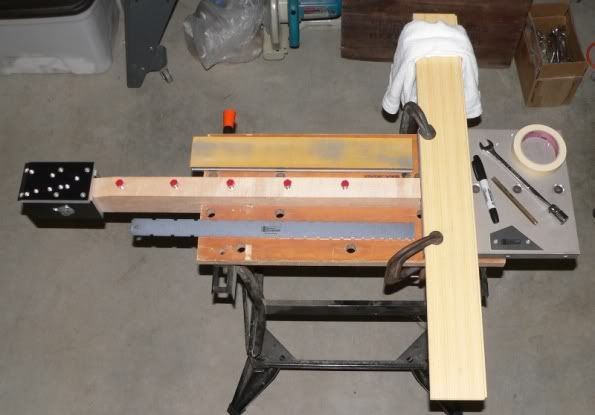I don't believe I've posted this before ...
I have a home made jig I use when leveling a fingerboard/fretboard and also the frets. The idea is to attach the neck and support it so that the fretboard/fingerboard is level along its entire length. The support keeps the center of the neck from flexing while sanding the wood level to tolerance, which prevents a small bow from being sanded into the center if the neck were to flex under weight of the sanding block.

The neck is secured into place so that its centerline is directly above the centerline of the jig. I then adjust the bolts up to the neck so that they support it, and validate the neck is level with a notched straight edge(as seen below.) Each of the bolts is capped with a thin piece of rubber like material to prevent marring of the neck, but also a material the resists compression so that it doesn't give

I then utilize a long machined radius block (seen in the first image with slightly used 300 grit gold colored sandpaper attached) to sand the fretboard/fingerboard or frets until they are all level to the same arc. I use a machined leveling bar when working a compound radius board.
I've recently revised by fret dressing workflow for that portion of the job that takes place after the frets are all leveled (recrowning, edge dressing, and polishing) and am finding the results to be significantly superior to my old workflow. When time permits I'll document my steps and post them here
all the best,
R






